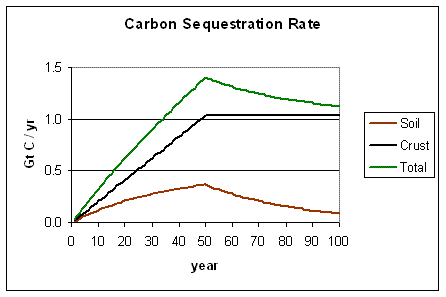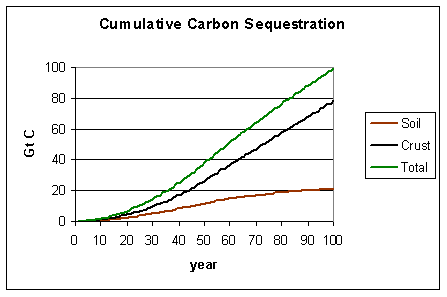|
Tilman, Hill, and Lehman (1) examined the effect of replacing fossil fuels with “carbon-negative” biofuels such as diverse restored prairie flora to reduce greenhouse emissions. The term “carbon-negative” is used because the roots and soils of restored prairie systems will sequester carbon at the same time as the harvested biomass is used for energy production, resulting in a net transfer of carbon from the atmosphere to the soils, saturating after about a century. This is an important new possibility for ameliorating climate change. However, the authors neglected another important possibility: combining their approach with technology for carbon capture and storage (CCS) can amplify the effect and avoid saturation indefinitely.
Obersteiner et al (2) pointed out that biomass energy production combined with CCS can be used to remove carbon from the atmosphere and return it to deep reservoirs within the lithosphere, thereby actually reversing the effect of fossil fuel consumption. Picking up on this idea, Kraxner et al examined forest management schemes using CCS technology and estimated a potential net removal of 2.5 tonnes of carbon per hectare per year for timberland managed to maximize the CCS benefit (3).
If the prairie grasses discussed by Tilman et al were processed in power plants equipped with CCS technology, then the “carbon negativity” of this energy source could be increased substantially. Their computations indicate that the carbon sequestration in the soil and roots would amount to about 21 tonnes of carbon per hectare during the first two decades of converting degraded cropland to native prairie grasses. Their experiments also indicate that these grasses will produce between 3.7 and 5.6 tonnes of biomass per hectare per year, depending on the fertility of the soil. Assuming this biomass is roughly 50% carbon, energy generation using CCS technology could potentially store between 1.85 and 2.8 t C ha-1 yr-1, which is within the same range as the forest management scheme examined by Kraxner et al. This amount is considerably more than the average of 1.05 tonnes of carbon per hectare per year of soil sequestration, and it has a qualitatively different effect—that of permanently transferring the carbon from the biosphere back to the lithosphere.
|


